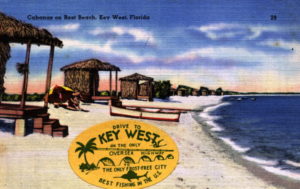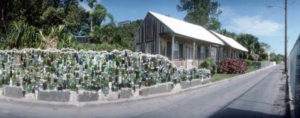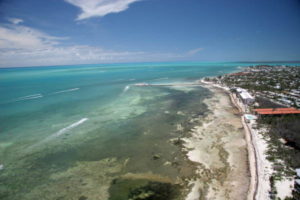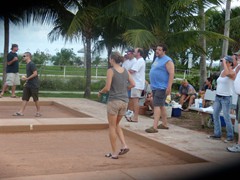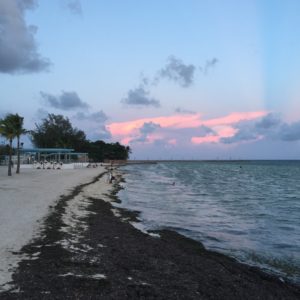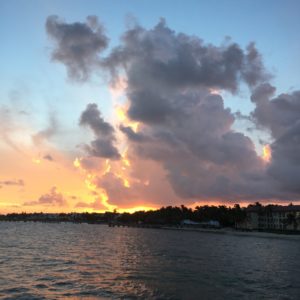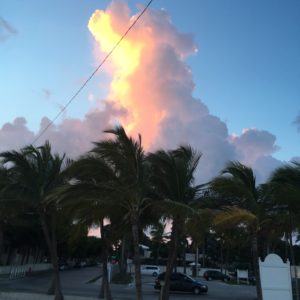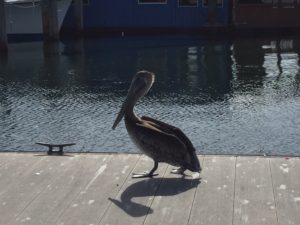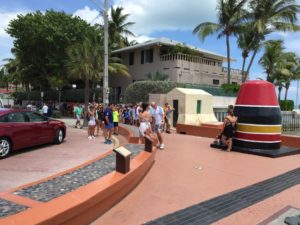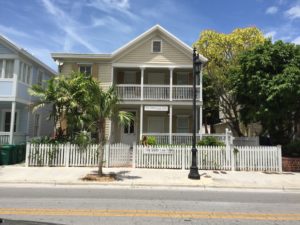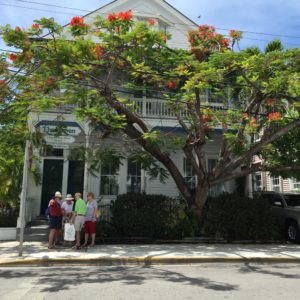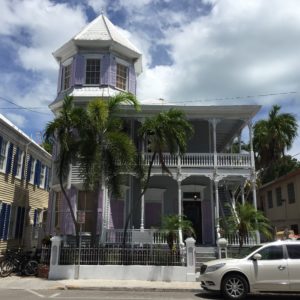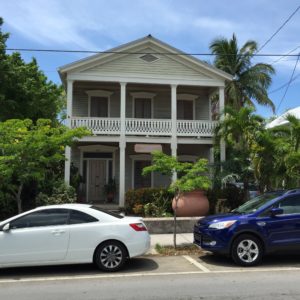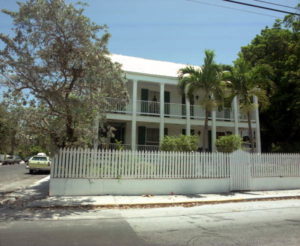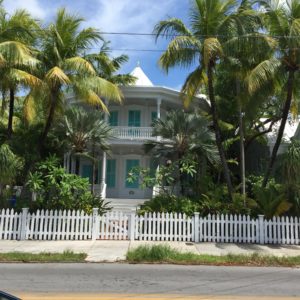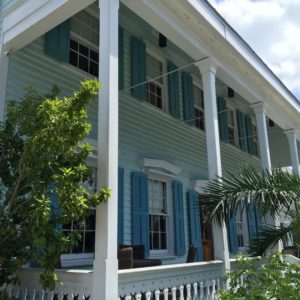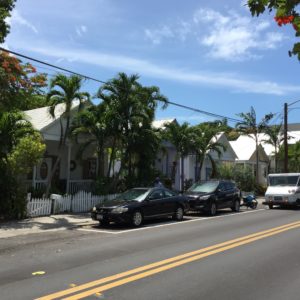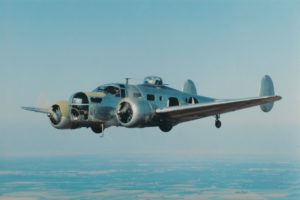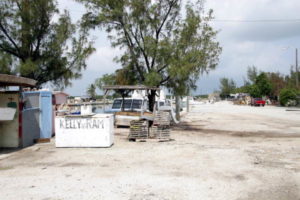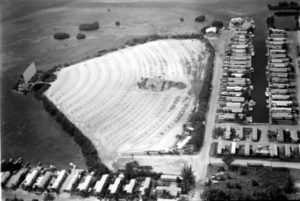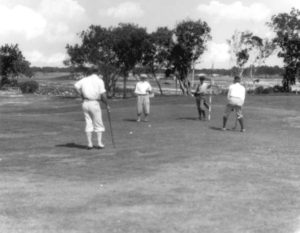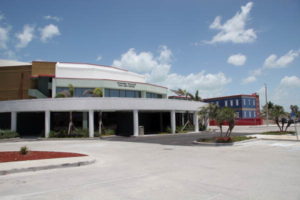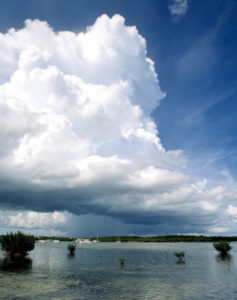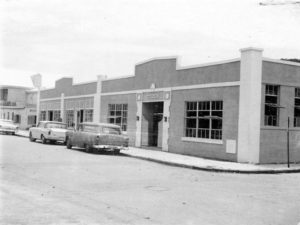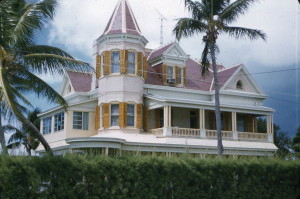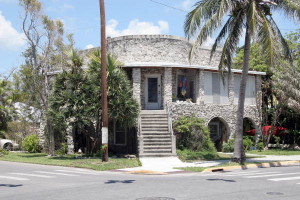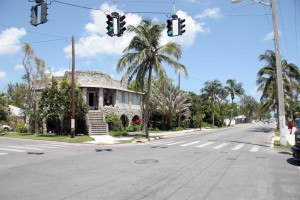When I was young in the mid fifties, during the summers we would get out our canvas folding camp chairs after supper and a good group of us would head down to the trailer park on United Street a few blocks from our neighborhood. Most nights they would show a movie on their outdoor large movie screen. I guess in retrospect it was for the residents of the trailer park, but no one ever seemed to mind us kids showing up. We called it The Free Show. The movies were mostly old and B-rated. We probably went mostly for something to do and the popcorn and sodas, which they were glad to sell us. We would get home around ten or so. I marvel today that we were allowed by our parents to do that. Back then it was considered safe enough to allow kids to explore and taste their environment. On the way home, we would stop to see if the Night Blooming Cereus Cactus on the corner was blooming, and we were thrilled when it was. Some of these species only bloom once a year for one night. I think this was one of them.
On the way home, we would stop to see if the Night Blooming Cereus Cactus on the corner was blooming, and we were thrilled when it was. Some of these species only bloom once a year for one night. I think this was one of them.
We children of the fifties had intimate connections with the flora and fauna in our play environs. We were hardly ever inside and when outside almost always exploring. 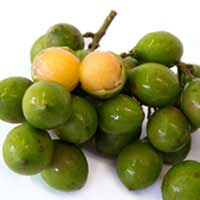 There were many tropical fruit trees in our neighborhood. Spanish Limes were a favorite. There was a huge Spanish Lime tree down the street. In August we would climb the tree and collect bagfuls. You cracked the skin of the lime with your teeth. It came off easily and you would suck on the seed pulling the flesh off and spit the seed out. They were rather tart especially if we picked them too early, which we were want to do. Mom would ask, “How are the Spanish Limes?” We would say, “Sweet as sugar” as we puckered our mouths. Our mothers hated them as they left large brown stains on all our clothes. The best place to eat them was in the ocean. Those trees were all over the island back then. But sadly not so today, too many have been cut down.
There were many tropical fruit trees in our neighborhood. Spanish Limes were a favorite. There was a huge Spanish Lime tree down the street. In August we would climb the tree and collect bagfuls. You cracked the skin of the lime with your teeth. It came off easily and you would suck on the seed pulling the flesh off and spit the seed out. They were rather tart especially if we picked them too early, which we were want to do. Mom would ask, “How are the Spanish Limes?” We would say, “Sweet as sugar” as we puckered our mouths. Our mothers hated them as they left large brown stains on all our clothes. The best place to eat them was in the ocean. Those trees were all over the island back then. But sadly not so today, too many have been cut down.
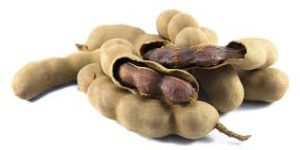 In the vacant lot across the street was a large tamarind tree. It had 4 inch pods that cracked open easily revealing a brown fruit that we would suck on. It was rather sour. We didn’t do it too often, only when we could think of nothing else to do.
In the vacant lot across the street was a large tamarind tree. It had 4 inch pods that cracked open easily revealing a brown fruit that we would suck on. It was rather sour. We didn’t do it too often, only when we could think of nothing else to do. In our own yard, we had a Guava Tree. My Aunt Nellie would gather the fruit when they came in and make Guava Duff and there was a Sugar Apple tree.
In our own yard, we had a Guava Tree. My Aunt Nellie would gather the fruit when they came in and make Guava Duff and there was a Sugar Apple tree. 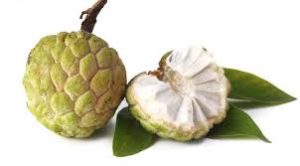 The Sugar Apple had a segmented skin, and I remember it had a white flesh surrounding each big black seed. Both those trees are long gone. The Tamarind tree also. The vacant lot it was in has a huge house on it.
The Sugar Apple had a segmented skin, and I remember it had a white flesh surrounding each big black seed. Both those trees are long gone. The Tamarind tree also. The vacant lot it was in has a huge house on it.
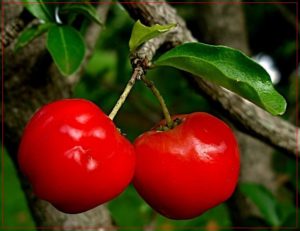 Down the block there were two Barbados Cherry trees. Not too large so the fruit was easy to pick. One was in Mrs. Hood’s yard. We had to knock on the door and ask permission to get those. They were really good and worth the trouble. The other tree we just took from. It was near the street and I guess we thought fair game.
Down the block there were two Barbados Cherry trees. Not too large so the fruit was easy to pick. One was in Mrs. Hood’s yard. We had to knock on the door and ask permission to get those. They were really good and worth the trouble. The other tree we just took from. It was near the street and I guess we thought fair game.
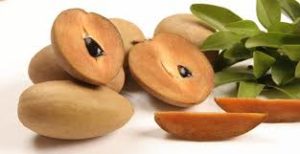 In my friend’s yard there was a large Sapodilla tree. I remember eating one once, and never did that again. It’s a wonder that we didn’t poison ourselves. Someone must have told us they were edible. And they were, just not by me.
In my friend’s yard there was a large Sapodilla tree. I remember eating one once, and never did that again. It’s a wonder that we didn’t poison ourselves. Someone must have told us they were edible. And they were, just not by me.
 In the yard next door was a Sour Orange tree. My Mother would marinate a pork roast in the juice and use some juice in the gravy. The oranges had lots of seeds. I guess most wild fruit does. It’s gone too, people buying houses, fixing them up, adding new landscaping. I was horrified to find the tree gone which was not too long ago.
In the yard next door was a Sour Orange tree. My Mother would marinate a pork roast in the juice and use some juice in the gravy. The oranges had lots of seeds. I guess most wild fruit does. It’s gone too, people buying houses, fixing them up, adding new landscaping. I was horrified to find the tree gone which was not too long ago.
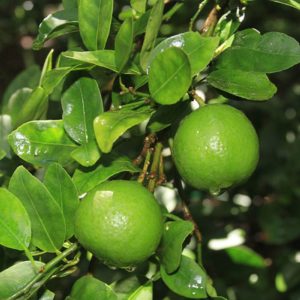 Of course Key Lime trees were all over. Our mothers made pies. We kids would pick them off the trees and peel them and eat them. That ended when my mother told us to stop because the acid was wearing the enamel off our teeth.
Of course Key Lime trees were all over. Our mothers made pies. We kids would pick them off the trees and peel them and eat them. That ended when my mother told us to stop because the acid was wearing the enamel off our teeth.
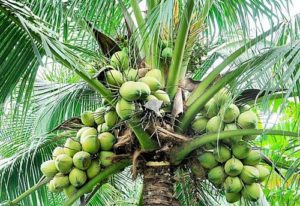 Coconut trees were also ubiquitous, several if not more in most yards. The brown coconuts that had just fallen off a tree, we would bounce on the asphalt street until they started to come apart and then with brute strength peel the husk off the coconut.
Coconut trees were also ubiquitous, several if not more in most yards. The brown coconuts that had just fallen off a tree, we would bounce on the asphalt street until they started to come apart and then with brute strength peel the husk off the coconut.  You could then punch some holes in the soft eyes of the baseball-sized seed and drink the coconut milk. Then you could break open the nut and eat the white meat, which didn’t come too easily off the nut, or shred the meat for use in baking. One summer we kids opened a whole bunch of coconuts and put them in our little red wagons to sell. I don’t remember making any money off the endeavor. But we probably learned a lesson in supply and demand.
You could then punch some holes in the soft eyes of the baseball-sized seed and drink the coconut milk. Then you could break open the nut and eat the white meat, which didn’t come too easily off the nut, or shred the meat for use in baking. One summer we kids opened a whole bunch of coconuts and put them in our little red wagons to sell. I don’t remember making any money off the endeavor. But we probably learned a lesson in supply and demand.
